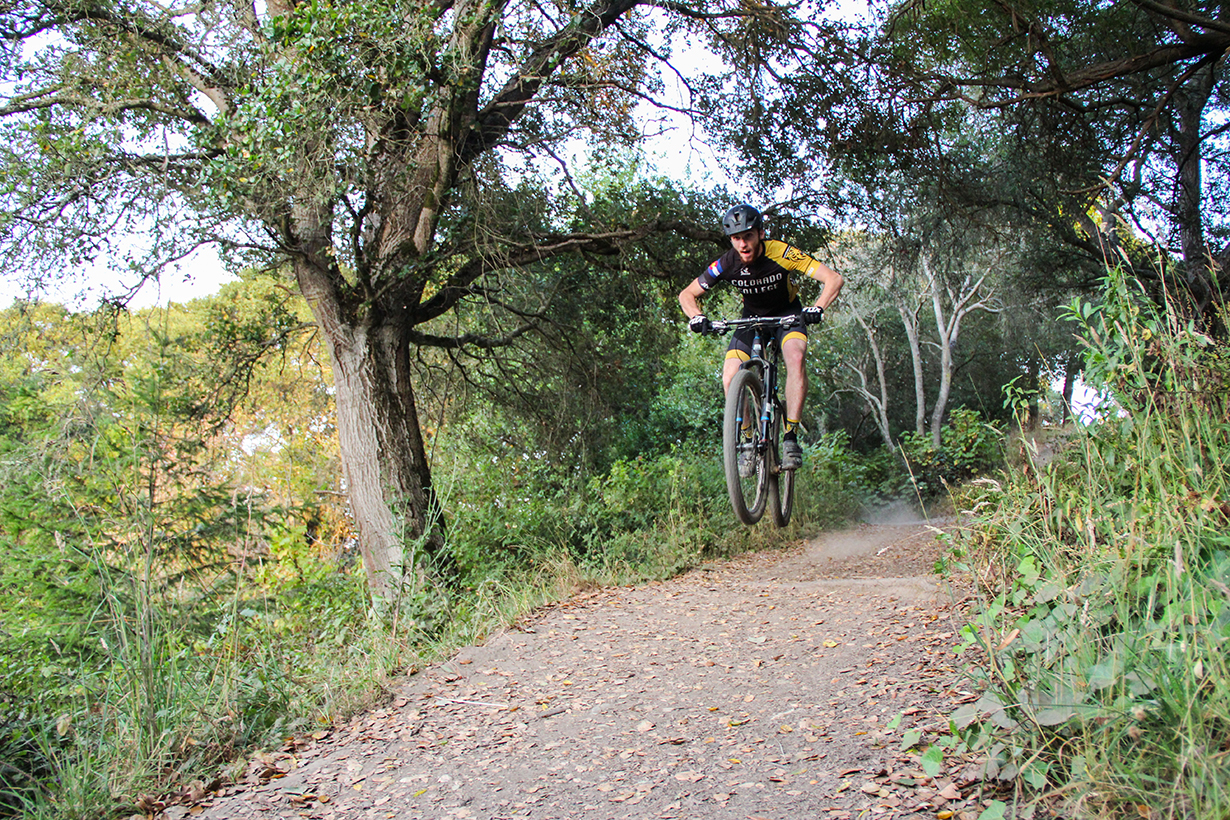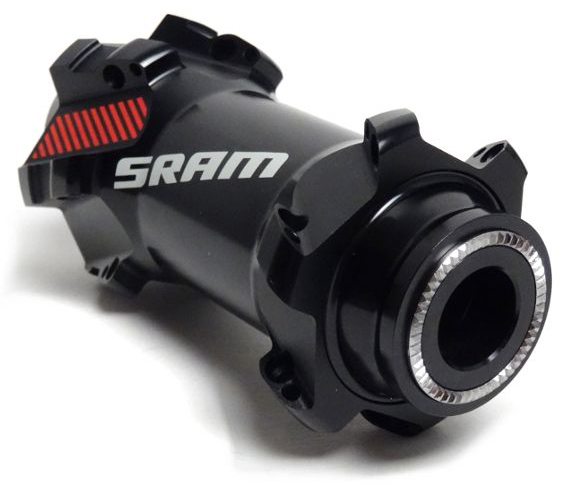
RockShox RS-1 29” Fork
Travel: 100 mm
Axle to Crown: 506 mm
Blister’s Measured Weight: 3.7 lbs
Offset: 46 mm
MSRP: $1895
Bolted to: Bulls Black Adder 29
Rider: 5’10”, 143 lbs.
Test Location: Colorado Springs, CO; Northern CA
Test Duration: 2 months
Intro
Take a quick glance at the RockShox RS-1, and you’ll probably notice one thing right away: it’s inverted. There are a lot of great reasons to make an inverted fork. It isolates the least stiff part of the fork at the bottom, uses gravity to constantly lube the fork’s seals, and reduces unsprung mass.
However, inverted forks aren’t typically favored by mainstream manufacturers because of issues with stiffness and weight. So when RockShox suddenly released an inverted XC fork, it had a lot of people scratching their heads and wondering, Why? After all, RockShox had a good thing going with their XC-specific SID and Reba, as well as their Revelation for light-duty trail use. Did the RS-1’s radical new design offer distinct advantages over the status quo? Where did it even fit within the existing RockShox lineup?

I’ve spent time on the RS-1 over the last few months, seeking to answer these questions for myself.
Options
When RockShox originally released the RS-1, it was available for 29ers only. RockShox now offers the RS-1 in a 27.5” configuration as well. Offset for the the 27.5” version is a pretty typical 42 mm. The 29” version is available with either 46 mm or 51 mm of offset. The fork is available in 80 mm, 100 mm, and 120 mm travel configurations.
Chassis
The chassis of the RS-1 is radically different from any fork RockShox has released — and for that matter, any other fork on the market. Not only is it inverted, but the entire upper assembly of the fork is molded as a single piece of carbon from the steerer tube down to the ends of the uppers. The uppers are also aggressively tapered to boost stiffness without adding weight.
The stanchions on the RS-1 are a very typical 32 mm diameter, but since they’re placed at the bottom end of the fork, they should make the fork feel less flexy than if they were mounted conventionally. If we make the assumption that the stanchions are the thinnest — and thus the flexiest part of your fork — then you’re better off putting them where the flexing can’t move the axle around as much.
Since the RS-1 lacks a conventional fork arch, the stanchions can rotate around freely and the damper side can slide up and down when you slide the thru axle out. If I wasn’t careful, I was often left with two totally misaligned dropouts when I wanted to put the wheel back on. This was mostly just amusing, but I could picture a stressful race day scenario where this could get frustrating. Locking out the fork prior to removing the wheel stops the damper side stanchion from sliding up and down, but you still have to deal with stanchions that rotate around if you bump them.
Instead of being clamped to the fork leg like on a conventional fork, the brake line is routed through oversized guides that allow it to move in relation to the upper leg as the fork compresses. This was a smart move, as it prevents the brake line from bending and potentially going into the spokes.
The RS-1’s lack of a conventional fork arch means that it can clear a 2.5” tire without any issue. RockShox doesn’t explicitly recommend this, but I’ve seen people cram plus-sized tires into the RS-1 as well. The fork can run up to a 200 mm rotor.
Predictive Steering Hub
Since the RS-1 lacks a fork arch, the two legs are only connected via the crown and axle. Knowing that they would have to rely solely on these two points to keep the fork stiff, RockShox opted to use a proprietary hub design they call Predictive Steering. This is simply a hub that features teeth on the outer edge of the hub that interlock with matching teeth on the dropouts.

I was a little bummed to discover that Predictive Steering doesn’t predict what’s coming up on the trail in front of you, but it is supposed to improve stiffness at the bottom end of the fork and keep the stanchions moving as one unit. You can also run the fork without the Predictive Steering hub, but it would likely feel more torsionally flexy, so I wouldn’t recommend it.
Stiffness
The “smashability” of the RS-1 was like no other fork I’ve ridden of this weight, and the fork’s fore-aft stiffness is on par with that of a RockShox Pike. Charging at speed in a straight line over awkward piles of sandstone was a pleasure. The fork consistently kept my front wheel rolling up and over obstacles, rather than getting deflected backward and making the front wheel feel bogged-down.
I think this fore-aft stiffness also helps make the fork exceptionally active under braking. These characteristics made for a fork that kept me seeking out burly terrain to hit, despite being on a hardtail with a rigid seat post for the entirety of the test.
On the other hand, the fork’s torsional stiffness left something to be desired. When leaning the bike at speed, it occasionally felt like the front wheel was twisting under me as it got deflected off of obstacles. High-speed, off-camber corners amplified this feeling.
You can kind of replicate what’s going on with a very unscientific parking lot test. If you hold the front wheel still and then push down on one end of the handlebar in a twisting motion, you can get the bar to move in relation to the front wheel. This type of flex isn’t really something you notice as much in a conventional fork. I doubt this torsional flex was anything that would lead to lost seconds in a XC race, but it took some of the lively, flickable feel out of an otherwise stiff chassis.
In short, the RS-1 definitely saved my ass a number of times when I was bouncing down sketchy rock faces, but it also felt kind of dull and unplayful on berms and fast, flowy terrain.
NEXT: Air Spring, Damping, Etc.
